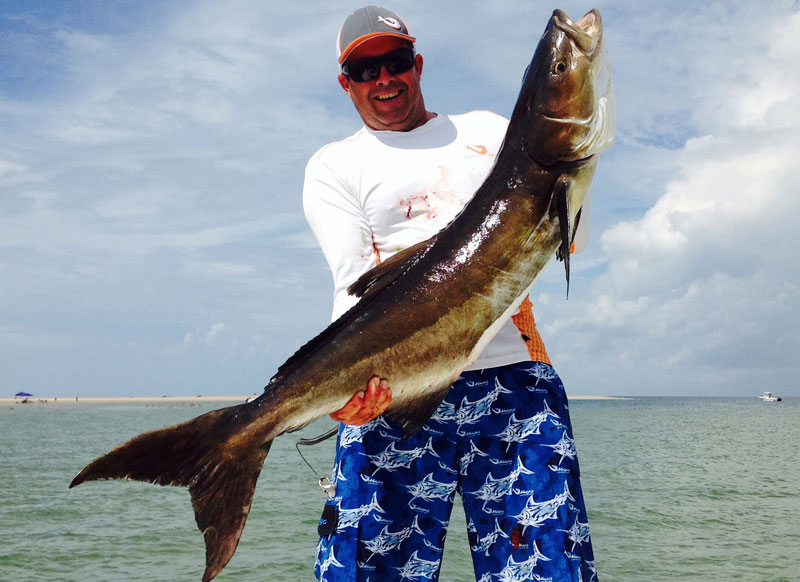
Cobia come from the south for spring
Like tourism in reverse, cobia stream north from Florida to North Carolina as spring begins to warm ocean waters.
“The magic number in May is 65 degrees around here,” said guide Dale Collins of Pogies Tackle & Kayak in Swansboro.. “Cobia and king mackerel start making runs from Florida at the same time.”
Collins, who runs Fish or Die Charters (252-422-4326) said cobia swarm to nearshore waters from south of Bogue Inlet to Oregon Inlet, creating sight-fishing opportunities near channel-marker buoys, flotsam, cardboard, pieces of wood and seaweed mats.
Their natural curiosity, fighting spirit, often large size and great taste make them attractive targets.
“I’d start at inshore (artificial reels) to find cobia and work my way toward shore,” Collins said. “The Keypost Rocks (ARs 340, 342 and 345) are good places. From May through the summer, cobia move inshore, lay around buoys and come into inlets like Bogue and Beaufort. They hang out any place with lots of baitfish.”
Guide Bryan Goodwin of Harkers Island (252-725-3961) said fishing often depends upon weather patterns.
“If we’re lucky enough, and a body of fish moves in, fishing can be great,” he said. “But too much northeast wind keeps them off the beaches. A southwest wind can trigger epic seasons. They also migrate (north) along the edge of the Gulf Stream.”
Both guides favor two fishing tactics
“Sight-fishing or soaking baits on the bottom will work,” Goodwin said. “Fairly calm seas, sunny days and clear water are best for sight-fishing.”
Collins cruises the beaches, tries to spot cobia, then casts live menhaden or bucktails at them.
“If you’ve got a tower on your boat, that’s best,” he said. “The higher, the better off you’ll be because you can see them.”
Goodwin said it’s a good idea to keep the sun at your back. Polarized sunglasses help anglers see sunning fish.
When Collins finds a bait ball, he’ll cast a 2- to 4-ounce bucktail with a ribbontail trailer or a live baitfish and let it sink.
Beaufort Inlet is a favorite cobia bait-soaking spot.
“A lot of guys go there, anchor and drop chum bags and lower baits to the bottom,” Collins said. “Cobia will be in the channel out to the Knuckle Buoy.”
Tackle includes 5000 to 6000 series reels mated to heavy-action rods with strong backbones.
“I use 50- to 60-pound Power Pro braid with 6 to 8 feet of 80-pound fluorocarbon leader,” Collins said. “You need equipment that can turn a big fish. You also want heavy jigs that’ll fall fast to get through a bait ball.”
Collins favors 8- to 12-inch curlytail grubs or plastic eels like a Z-Man HeroZ model. Cobia love live eels and menhaden, but so do other species.
“If bluefish are eating my live or dead baits, I’ll put a hard-shell crab on a hook,” Goodwin said. “Cobia also like crabs, and bluefish leave them alone.”




Be the first to comment